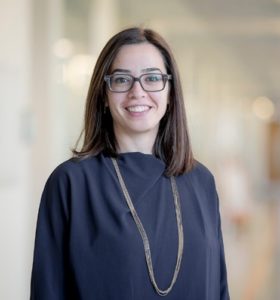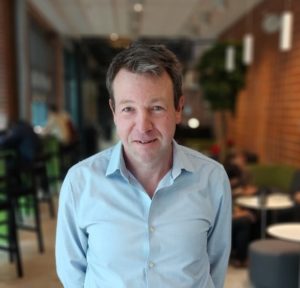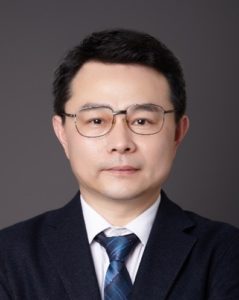This year we are pleased to celebrate 10 years since Journal of Materials Chemistry was split into three respective journals: Journal of Materials Chemistry A, B and C, each focusing on a different aspect of materials chemistry. We are grateful to our fantastic community of authors, reviewers, Board members and readers and wanted to showcase just some of them in a series of ‘Community Spotlight’ blog articles.
In this blog post, we feature some of the Advisory Board members who have supported Journal of Materials Chemistry A, B or C over the years and have asked them what they like most about being on the journal’s Advisory Boards. Check out their interview responses below.
Prof. Hiroshi Imahori

Hiroshi Imahori is an Advisory Board member for Journal of Materials Chemistry A. He received his Doctor of Science from Kyoto University in 1990. After post-doctoral training at the Salk Institute for Biological Studies, he was Assistant and Associate Professors at Osaka University. Since 2002, he has been a Professor at Kyoto University. His current interests involve solar energy conversion and organic functional materials. For his work, he has been awarded the Japanese Photochemistry Association Prize (2004), Japan Society for the Promotion of Science Prize (2006), the Chemical Society of Japan Award for Creative Work (2006), the Osaka Science Prize (2007), Fellow of the Electrochemical Society (2016), and the Chemical Society of Japan Award (2022).
|
What do you like most about being on the Advisory Board for Journal of Materials Chemistry A?
I have the privilege to access the academic network of JMCA and enjoy working together with people involved closely in JMCA.
What do you think of Journal of Materials Chemistry A as a place to publish impactful materials chemistry research?
I believe JMCA is one of the prestigious platforms for promoting recent results in energy-related science and technology.
Prof. Sahika Inal

Sahika Inal is an Advisory Board member for Journal of Materials Chemistry B and is the recipient of the 2022 Journal of Materials Chemistry Lectureship. She is an Associate Professor of Bioengineering with co-affiliations in Electrical Engineering and Materials Science and Engineering programs at King Abdullah University of Science and Technology (KAUST). Her expertise is in polymer science and bioelectronic devices, particularly in the photophysics of conjugated polymers, characterization of polymer films, and the design of biosensors and actuators. Since 2016, the Inal lab at KAUST exploits the functionalities of organic electronic materials, investigates ionic/electronic charge transport, and designs electronic devices that record/stimulate biological signals.
|
What do you like most about being on the Advisory Board for Journal of Materials Chemistry B?
RSC, in general, is a publisher that works for and alongside scientists. JMC B editorial team has been very open to the advisory board’s suggestions, and they want the journal to be a home for good science and a community with members that support each other. So, I feel that my voice is valued and all decisions taken are for the good of the community.
What do you think of Journal of Materials Chemistry B as a place to publish impactful materials chemistry research?
I have been reading papers in JMC B since I was in graduate school and some have affected the direction of research we took in my group. I have been writing and reviewing for JMC B and I can certainly say that the peer review process is thoughtful and done in a way to make the science in that paper more complete. The editors in JMC B work to help authors make their work better. Even when I got a paper rejected, the reviewer’s comments were helpful in resubmitting it.
Could you provide a brief summary of your most recent Journal of Materials Chemistry B publication?
I wrote an editorial piece on the recent work about conducting gels developed for wearable electronics. Mechanically compliant and electronic materials are at the core of devices that can electronically interface soft biological tissues. I summarized some of the work that was published in this area in the past year in JMC B and aimed to highlight the novelties and opportunities presented by each research idea. It is very interesting to read all these papers, see a common thread, and witness how each, even maybe small, development shown in each paper is now contributing to our common knowledge about this special class of materials. In a decade from now on, this collective knowledge in this class of materials will either generate a new materials type or will directly form the basis of wearable sensors, sensor-integrated prosthetics, and robotics technologies.
Prof. Christian Müller

Christian Müller is an Advisory Board member for Journal of Materials Chemistry C and is a professor in Polymer Science at Chalmers University of Technology, Sweden. He is a Wallenberg Scholar and received an ERC Consolidator Grant in 2022. Prior to Chalmers he completed postdoctoral stays at ICMAB-CSIC in Barcelona and Linköping University. He holds a Dr.Sc. in Materials Science from ETH Zürich (2008) and a M.Sci. in Natural Sciences from Cambridge University (2004). His research interests include the use of organic semiconductors and polymer blends in the fields of wearable electronics and energy technology.
|
What do you like most about being on the Advisory Board for Journal of Materials Chemistry C?
I have the opportunity to aid the community work of the RSC, especially the support of young faculty.
Where do you see the materials chemistry field in the next 10 years?
I anticipate that sustainability will be the central theme.
In your opinion, how could members of the community be more involved with the journal?
Involvement could be through the proposal of focus issues and perspective style manuscripts that highlight important trends in materials chemistry.
Dr Jun Fu
 Dr. Jun Fu received his B.Sc. at Wuhan University and Ph.D. at the Changchun Institute of Applied Chemistry, Chinese Academy of Science (CAS). After working in Max Planck Institute for Polymer Research and Massachusetts General Hospital/Harvard Medical School, Jun took a full professor position in Ningbo Institute of Materials Technology and Engineering, CAS. In 2019, he moved to Sun Yat-sen University in 2019. His research focuses on the synthesis and engineering of biomimetic and bio-functional polymers for applications as medical implants, wearable flexible electronics, and soft actuators. Jun joined the Advisory Board of Journal of Materials Chemistry B since 2017. Dr. Jun Fu received his B.Sc. at Wuhan University and Ph.D. at the Changchun Institute of Applied Chemistry, Chinese Academy of Science (CAS). After working in Max Planck Institute for Polymer Research and Massachusetts General Hospital/Harvard Medical School, Jun took a full professor position in Ningbo Institute of Materials Technology and Engineering, CAS. In 2019, he moved to Sun Yat-sen University in 2019. His research focuses on the synthesis and engineering of biomimetic and bio-functional polymers for applications as medical implants, wearable flexible electronics, and soft actuators. Jun joined the Advisory Board of Journal of Materials Chemistry B since 2017.
|
What do you like most about being on the Advisory Board for Journal of Materials Chemistry B?
It has been an amazing experience. I am excited to discuss with peer Board Members on the development of this esteemed journal. I have learned a lot from my peers and the Editors. I also enjoy recommending young scientists to this journal for its awards and special issue collections. It greatly helps promote the young scientists and spread the outreach of this journal.
Where do you see the materials chemistry field in the next 10 years?
Materials chemistry provides very powerful toolkits to confront these challenges in the fields of healthcare, resources, energy, environment, and sustainability, among others. People are endowing great efforts in the development of smart biomedical devices, flexible electronics, soft robotics, tissue engineering scaffolds, and 3D/4D bioprinting, for example, to promote breakthrough and practical applications in the next 10 years. I believe innovations in these fields will highly benefit our welfare.
Could you provide a brief summary of your most recent Journal of Materials Chemistry B publication?
Journal of Materials Chemistry B is always one of our first choices to publish our articles. To date, I have published 20 papers in Journal of Materials Chemistry B. In 2021, we published a review article “Tissue adhesive hydrogel bioelectronics” in Journal of Materials Chemistry B. In this publication, we reviewed recent progress on strategies to prepare tissue adhesive hydrogels and representative adhesion mechanisms for conductive hydrogels to adhere on biotissues. We are delighted that this review article is well recognized by readers and receives good citations.
We hope you enjoyed finding out more about some of our Advisory Board members. Keep an eye out for our next Community Spotlight blog post!










